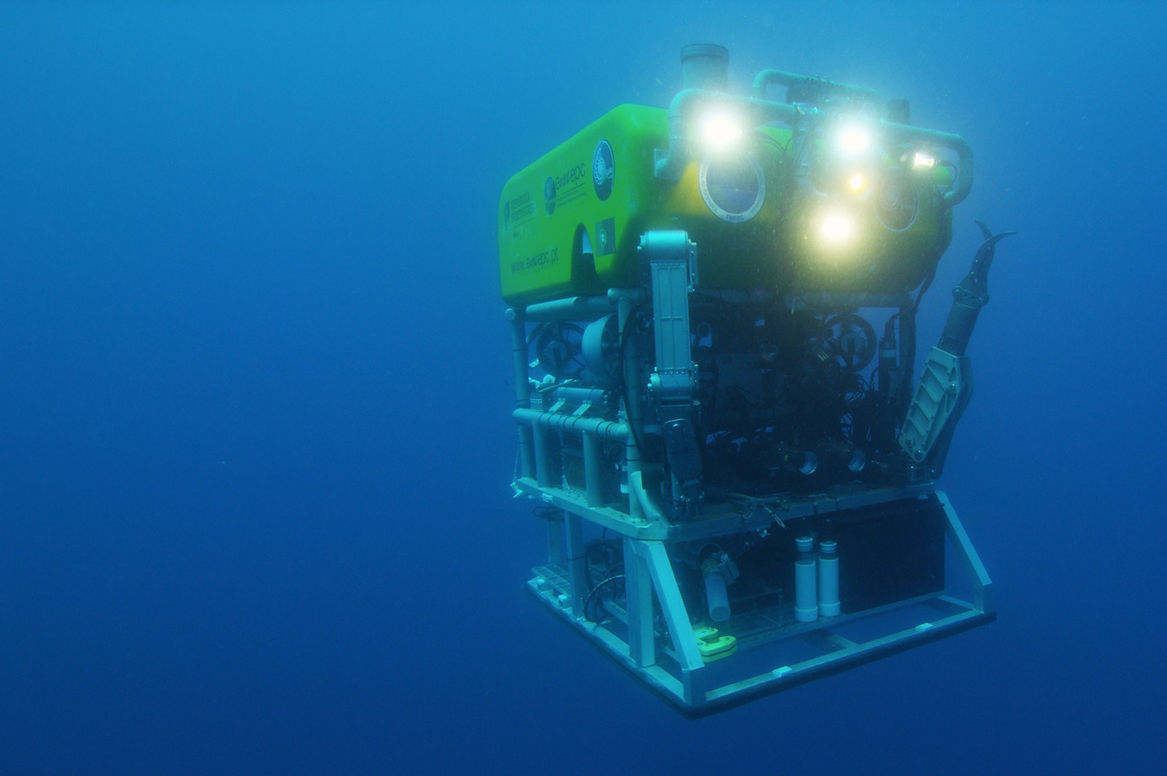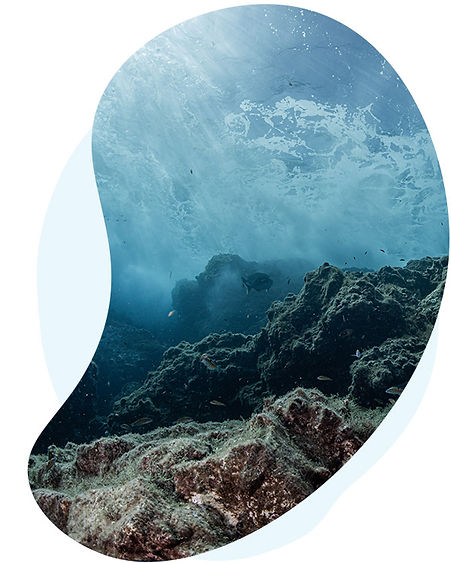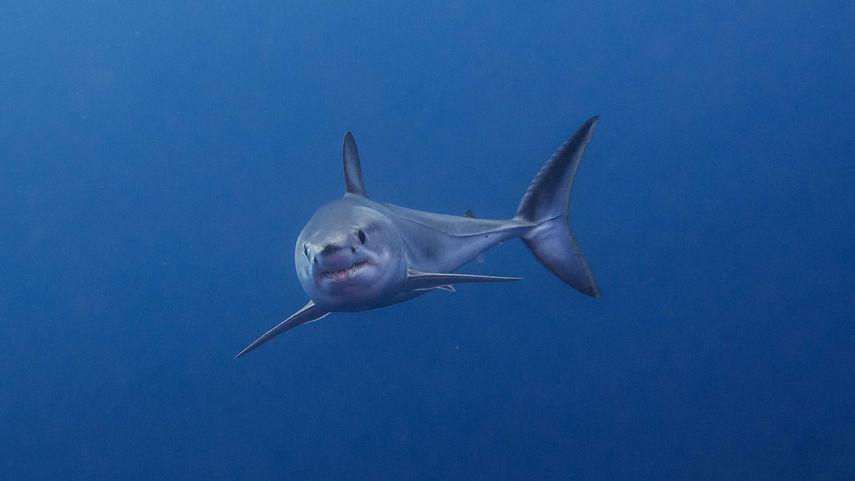
AZORES SEA
The Azorean Sea contains some of the most important island, open-ocean, and deep-sea environments in the North Atlantic. Despite its significance, this invaluable and irreplaceable blue natural capital is under threat. Decades of scientific expeditions and studies confirm both the richness and the fragility of the region’s marine species and habitats, which are in urgent need of protection.
The Azorean economy is deeply connected to the ocean, particularly through fisheries and tourism. In 2017, the annual value of fisheries was estimated at €31.7 million, while marine tourism ranged between €23.5 and €67 million. Another study, based on a regional survey, revealed that marine ecotourism generated €80 million in 2014, representing 2.2% of the region’s GDP. T
However, the economic potential of the Azorean ocean is vast. The emerging blue carbon and marine biotechnology sectors present significant opportunities, with a projected global market potential of €200 billion by 2030.

UNIQUE NATURAL HERITAGE
_-JL_jp.jpg)
Oceanic islands, such as the Azores archipelago, play a vital role in preserving marine biodiversity. They act as true oases for a wide range of species — including migratory ones like turtles, birds, fish, and marine mammals. These islands serve not only as key resting, breeding, and sheltering areas, but also function as "ecological bridges," enabling species to disperse to new habitats.
However, their geographic isolation also means that oceanic islands host many endemic species that are particularly vulnerable to external pressures, such as invasive species and habitat degradation.
The Azores Sea, which makes up roughly 55% of Portugal’s Exclusive Economic Zone (EEZ), is an ecologically significant expanse home to a remarkable diversity of ecosystems — including seamounts, hydrothermal vents, and deep-sea coral gardens. However, this natural wealth is increasingly threatened by human activities such as overfishing and pollution. Scientific research continues to highlight both the value of these ecosystems and the growing threats they face, reinforcing the urgent need to protect the archipelago and its surrounding waters to safeguard its unique biodiversity and preserve this irreplaceable natural capital.
In 2019, the Azores Archipelago was designated as an ocean Hope Spot by the Mission Blue Foundation's “Sylvia Earle Alliance,” a recognition aimed at making the conservation of the Azores Sea a priority in marine conservation.
“The Azores Archipelago is a magnet for life. It really is a
magical place. (…) Launching the Azores as Hope Spot is so
logical – just ask the whales. They know how special this
place is. This used to be a place where whales were killed
and now people are making a living by respecting the whales
and having people come out and visit them as fellow citizens
of the planet.”
Sylvia Earle


NUMBERS
1M km²
APPROXIMATELY 1 MILLION km²
3 000 m
AVERAGE DEPTH
> 5
HYDROTHERMAL VENTS
28
MARINE MAMMAL SPECIES
6
MARINE TURTLE SPECIES
560
FISH SPECIES
10
BREEDING SEABIRD SPECIES
>400
ALGAE SPECIES
>1000
INVERTEBRATE SPECIES
MARINE ECOSYSTEMS OF THE AZORES
DEEP-SEA BENTHIC ECOSYSTEMS
Seamounts
The Azores are home to more than 300 seamounts, which are key areas for benthic and pelagic marine biodiversity. These seamounts, stretching from shallow to deep waters, host cold-water corals and deep-sea sponges. These organisms play a crucial role as “ecosystem engineers,” creating complex structures that support a wide variety of marine life as well as essential ecosystem functions and services. However, coral and sponge habitats are extremely vulnerable to impacts such as bottom fishing. The fishing gear used in these activities can seriously damage these communities, whose recovery may take hundreds to thousands of years. Protecting seamounts is essential to ensure the continuity of marine ecosystems in the Azores and preserve the Region's natural capital for future generations. Moreover, protecting these habitats and acknowledging their role in the dispersal of marine species is essential to maintaining the health of global ocean ecosystems.
-EmanuelGoncalves_Azores_Santa_Maria.jpg)
-Kike-Ballesteros_Azores_Expedition_20160912-comp.jpg)
Cold-Water Corals, Sponge Aggregations, and Other Invertebrates
The Azores are known for their remarkable diversity of cold-water corals, with at least 184 recorded species. Corals and sponges are ecologically important and form complex habitats that serve as spawning, breeding, feeding, and nursery grounds for countless fish and invertebrates. These organisms are also key to regulating the carbon cycle and providing critical ecosystem services such as carbon storage and nutrient remineralization (the release of nutrients into the water in biologically available forms). These processes are vital to the health and balance of the ocean.
Hydrothermal Fields and Vents
The Azores Sea contains at least five hydrothermal vent fields along the Mid-Atlantic Ridge, located at different depths:
-
Luso (570 m)
-
Menez-Gwen (850 m))
-
Lucky Strike (1700 m)
-
Menez Hom (1800 m)
-
Saldanha (2300 m)
In addition to these, there is a hydrothermal vent at 20 m depth, D. João de Castro, located on a seamount of the same name and the only one accessible by recreational diving. There is also a hydrothermal vent in the proposed extended continental shelf area, Rainbow (2400 m). The D. João de Castro hydrothermal vent, due to its shallow depth, hosts communities similar to those found in coastal fauna and nearby seamounts.
One of the main highlights of the 2018 expedition was the discovery of the Luso hydrothermal field on Gigante Seamount, at a depth of 570 m.


Vulnerable Marine Ecosystems
Hydrothermal vents, coral reefs and gardens, and sponge aggregations are classified as Vulnerable Marine Ecosystems (VMEs) by the Food and Agriculture Organization (FAO) of the United Nations. VMEs are species, communities, or habitats particularly vulnerable to fishing activities. VME indicator species are usually slow-growing organisms with low reproductive rates, making them especially slow to recover from human-induced damage. Because of these characteristics, coral and sponge communities are particularly vulnerable: once removed or damaged, their recovery can take hundreds to thousands of years. The European Union recognizes the importance of protecting these ecosystems and enforces specific regulations to minimize the harmful impacts of fishing practices.
PELAGIC ECOSYSTEMS
In the western and central groups of the Azores, schools of small fish and sharks, such as the Blue Shark, are abundant. During our 2018 expedition, various fish and sharks were observed down to a depth of 1,480 m. The most frequent species included Blackbelly rosefish, Conger eels, Ratfish, and eels. Lanternfish and Breams were the most abundant. Sharks and rays were observed at 74% of the surveyed sites, with Albafar and Carocho being the most common species, and, to a lesser extent, Lixinha-da-fundura and Sapatas.
Manu-San-Felix_Tubarao-Rinquim-comp-azul.jpg)

CETACEANS
The Azores were recently recognized as a “Whale Heritage Site” by the World Cetacean Alliance, making it one of only six such sites in the world (and the second in Europe). This designation reflects the rich diversity of cetacean species inhabiting these waters, as well as the Azores’ deep cultural connection to whales—from a history of whaling to today’s whale watching and conservation efforts.
The International Union for Conservation of Nature (IUCN) has also recognized most of the Azores Sea as an Important Marine Mammal Area (IMMA).
The distribution and abundance of cetaceans in the North Atlantic still require broader data coverage, primarily gathered through onboard and land-based sightings. The Azores Fisheries Observation Program (POPA) has played a key role in regional data collection, having recorded 24 cetacean species, including baleen whales, beaked whales, dolphins, and sperm whales.
Seabirds
The Azores are a global hotspot for seabirds, home to ten breeding species, such as the Cory’s Shearwater, Bulwer’s Petrel, Manx Shearwater, Madeira Storm-Petrel, Monteiro’s Storm-Petrel, Band-rumped Storm-Petrel, Common Tern, Roseate Tern, Yellow-legged Gull, and Black Tern. Of the 106 Important Bird Areas in Portugal, 42 are in the Azores, including two in oceanic zones. The islands of Corvo and Flores are vital for feeding, resting, and breeding of some of these birds.
A recent study highlighted the importance of depth and proximity to seamounts for the feeding of Monteiro’s Storm-Petrel, recommending the expansion of Marine Protected Areas—particularly along the Mid-Atlantic Ridge and around seamounts.
Su%C3%A1rez-Naranjo-de-Getty-Images.jpg)











.jpg)
%20Emanuel%20Goncalves_S_Maria_Azores_20160912.jpg)
%20Emanuel%20Goncalves_Azores_Expedition_2018_20180613_122544.jpg)